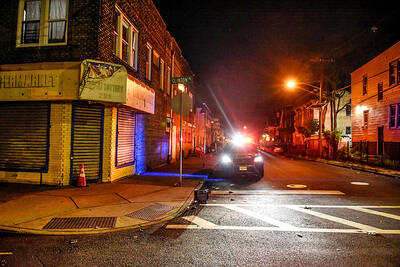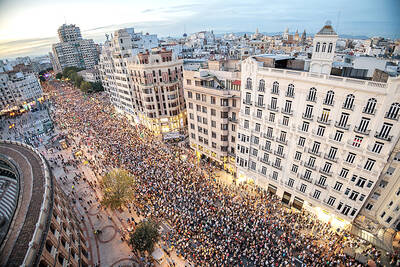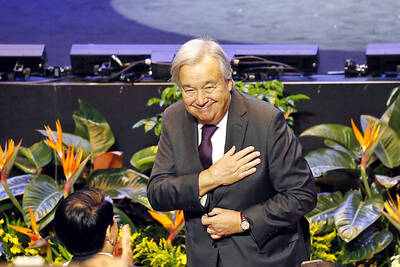Rescue crews working underground burrowed close to a minibus trapped under tonnes of earth and rubble following the collapse of a subway station construction site, but were forced to retreat because of unstable ground, officials said.
Aided by dogs sniffing for the passengers, rescuers found the vehicle but turn backed late on Sunday because officials feared the ground might again give way, burying them, Sao Paulo State Governor Jose Serra said.
Authorities then decided to take a different approach to the bus, entombed under rubble and dirt after the concrete walls of a huge hole being excavated for the station fell apart on Friday.
Effort were complicated by large chunks of concrete that prevented rescuers from going deeper into the crater where as many as many as seven people are buried, including four in the minibus.
Witnesses reported the minibus was carrying a driver, fare collector and two passengers when it fell into the crater, said a spokesman for Sao Paulo's subway system. Two pedestrians and a truck driver may also be buried.
"We are working under the assumption that there may be at least seven people trapped underneath the rubble," Davanco said.
Authorities said they still hoped to find survivors more than 48 hours after the collapse at the construction site next to one of Sao Paulo's busiest highways.
"It is possible that an air pocket buttressed by a beam or something else may have been created," Colonel Joao dos Santos of Sao Paulo's fire department said.

DOUBLE-MURDER CASE: The officer told the dispatcher he would check the locations of the callers, but instead headed to a pizzeria, remaining there for about an hour A New Jersey officer has been charged with misconduct after prosecutors said he did not quickly respond to and properly investigate reports of a shooting that turned out to be a double murder, instead allegedly stopping at an ATM and pizzeria. Franklin Township Police Sergeant Kevin Bollaro was the on-duty officer on the evening of Aug. 1, when police received 911 calls reporting gunshots and screaming in Pittstown, about 96km from Manhattan in central New Jersey, Hunterdon County Prosecutor Renee Robeson’s office said. However, rather than responding immediately, prosecutors said GPS data and surveillance video showed Bollaro drove about 3km

‘MOTHER’ OF THAILAND: In her glamorous heyday in the 1960s, former Thai queen Sirikit mingled with US presidents and superstars such as Elvis Presley The year-long funeral ceremony of former Thai queen Sirikit started yesterday, with grieving royalists set to salute the procession bringing her body to lie in state at Bangkok’s Grand Palace. Members of the royal family are venerated in Thailand, treated by many as semi-divine figures, and lavished with glowing media coverage and gold-adorned portraits hanging in public spaces and private homes nationwide. Sirikit, the mother of Thai King Vajiralongkorn and widow of the nation’s longest-reigning monarch, died late on Friday at the age of 93. Black-and-white tributes to the royal matriarch are being beamed onto towering digital advertizing billboards, on

Tens of thousands of people on Saturday took to the streets of Spain’s eastern city of Valencia to mark the first anniversary of floods that killed 229 people and to denounce the handling of the disaster. Demonstrators, many carrying photos of the victims, called on regional government head Carlos Mazon to resign over what they said was the slow response to one of Europe’s deadliest natural disasters in decades. “People are still really angry,” said Rosa Cerros, a 42-year-old government worker who took part with her husband and two young daughters. “Why weren’t people evacuated? Its incomprehensible,” she said. Mazon’s

POWER ABUSE WORRY: Some people warned that the broad language of the treaty could lead to overreach by authorities and enable the repression of government critics Countries signed their first UN treaty targeting cybercrime in Hanoi yesterday, despite opposition from an unlikely band of tech companies and rights groups warning of expanded state surveillance. The new global legal framework aims to bolster international cooperation to fight digital crimes, from child pornography to transnational cyberscams and money laundering. More than 60 countries signed the declaration, which means it would go into force once ratified by those states. UN Secretary-General Antonio Guterres described the signing as an “important milestone,” and that it was “only the beginning.” “Every day, sophisticated scams destroy families, steal migrants and drain billions of dollars from our economy...